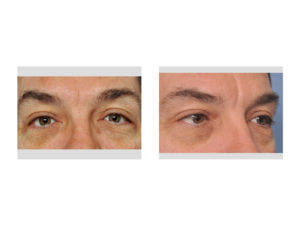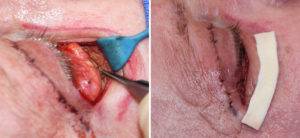
In the May 2018 issue of the journal Plastic, Aesthetic and Recostructive Surgery an article was published entitled ‘Aging of the bony orbit is a major cause of age-related intraorbital fat herniation’. In this paper the authors evaluated over 200 patient CT scans studying the relationship between the bony orbit and orbital fat density using parasagittal and 3D measurements. Their findings showed that infraorbital fat herniation length has a positive correlation with orbital rim inclination.
The lower the infraorbital rim is places a mechanical stretch on the orbicularis retaining ligament, tear tough ligament and orbital septum which can create infraorbital fat herniation. A negative correlation was observed between orbital fat density and age which shows that as the orbital volume gets bigger it does not cause the orbital fat to develop a hypertrophic response as a result. In essence infraorbital fat herniation is not the result of new fat developing with age but rather the increased orbital volume due to rim lowering and the drooping of the lower eyelid (age-related changes of the skin and muscle) causes what does exist to spill over the bony rim.

Dr. Barry Eppley
Indianapolis, Indiana


